Last month it was announced that Dona Flor, a top brand in Brazil for years, would be reintroduced to the American market with a handful of new blends, including Seleção and Puro Mata Fina. StogieGuys.com recently spoke with the man who is making this reintroduction possible: Chris Edge, owner of Dona Flor USA.
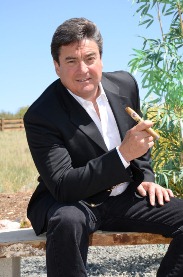 Stogie Guys: We were fans of Dona Flor back in 2005 when the brand was first available the U.S. What were the legal issues that ended U.S. distribution?
Stogie Guys: We were fans of Dona Flor back in 2005 when the brand was first available the U.S. What were the legal issues that ended U.S. distribution?
Chris Edge: Dona Flor became available in the U.S. back in 2000. There were a few smaller distributors who were attempting to get them established. In 2005 they really began to get some attention as most Americans don’t even know that Brazil has tobacco, let alone of its quality. In 2007 there were some problems, probably caused by poor communication and an unclear contract which resulted in a trademark infringement case being brought to the courts. The litigation stopped the importing of the cigars until about 2009, when a distributor (who is married to a Brazilian) began to bring them back into the US. The case was settled out of court in December 2011. The actual details of the settlement are unknown and both parties agreed not to discuss it. The public records are available in the Miami Dade County public records if you really want to dig into it. Other than that, there is little I can tell you, or really even want to get in to. It was very unfortunate that things happened the way they did as these are some of the most consistent, quality-grown, and quality-controlled cigars in the industry and had a very good following when they stopped importing them due to the litigation. My focus has been, for the past two years, to feel out the market on the past, how it affected the consumers, what was the overall perception of the brand and the cigar, and how to reintroduce it.
SG: The press release that announced the reintroduction of Dona Flor to the U.S. market labeled you a “cigar enthusiast and successful business man from Denver.†Can you tell us a little more about your business background, or any previous experience in the cigar industry?
CE: In a nutshell, between my wife and me, we have raised eight children. Yes, I said eight. If that right there doesn’t qualify you for a medal in patience, market trends, and changes from year to year, I don’t know what does. I spent 35 years in advertising and marketing in corporate America. I retired from the last company after 20 years for health reasons, pretty much sick and tired of being sick and tired about the entire corporate experience. During that time I spent 18 years involved in union-company relations. Overall, the entire business is a people business, I loved working the streets, being face to face with the store owners, still do to this day. During that time I was also my own real estate remodeler and would buy, fix up, and sell my own houses, each time getting a little bigger. We always seemed to live in a construction zone but I think that was just a stress reliever for me over the years. After I retired in 2005, I continued into the real estate arena with my wife and did very well until that industry collapsed. From there I spent some time in the mortgage industry only to discover more corporate disillusion and started a distribution company in 2008 which eventually led me into the cigars. I have been an enthusiast for over 20 years and truly enjoyed the product for what it really is: an opportunity to capture a moment in time and to enjoy that moment for all of its virtues. That particular moment of forgetting about the worries of life and to enjoy just being, the place you are at, who you are with, the weather at that moment, the conversation everything. Whether I would be sitting on my back deck having a fine scotch, or wine with friends, or looking for a little white ball I just hit into the bushes, it’s all about the moment. I stumbled into an IPCPR Trade Show in Vegas while attending another show and it just all came together. The energy, the people, the entire industry. There really is a reason they call us enthusiasts. From there things just happened and so here I am.
SG: Why take on the distribution of Dona Flor, and why now?
CE: That’s a very good question because if it were anything but this line I probably would not be doing what I am now. Regardless of the passion I have for enjoying my time and my life with a good cigar, there is still a business side to it. I wanted something different, something that no one else had, something that gave consumers a different angle to try. Dona Flor was the perfect fit. Menendez Amerio has been growing and rolling cigars for 35 years now. Arturo and Felix are both Cuban descendants who spent time in the family business of growing tobacco until Casto took over. That is another story that you should hear sometime. Anyway, bottom line is that there were no 100% Brazilian cigars on the market despite the fact that Brazilian tobacco has been used in some of the finest cigars for decades. So this gave me the niche that I was looking for, a top quality product, currently unavailable. A huge target market that is constantly changing taste and looking for something new and different. A perfect fit.
SG: Approximately how many U.S. retailers do you expect to be carrying Dona Flor products after this summer’s trade show? Are you marketing to online retailers or B&M tobacconists only? Are you also aiming for distribution in Canada?
CE: I would like to see our product in over 300 stores by the end of the year. I have spent almost two years preparing for this release. I have been talking to consumers, distributors, and retailers, listening to their needs and how best to service them. The litigation problem really caused more issues than you might think, mostly because the retailers and consumers were not informed of the situation and the product just simply vanished. Out of sight and out of mind. The distributors were frustrated because they had access to a great product and put themselves on the line only to be let down. There is a huge trust level between distributors and their retailers and that has to be respected. Our focus is to support the B&M retailers—these are the back bones of this business. The internet business is a great business just not for this particular brand or product. We are doing everything we can to keep them out of the online sites and make them available only to quality distributors and quality tobacco tobacconists. Right now my focus is strictly on the U.S. market and getting it reestablished. From there, who knows? Our current efforts are getting calls from around the world. Switzerland, Canada, Australia, New Zeland, Israel. We must be doing something right but for right now it’s one step at a time. U.S., here we come.
SG: It looks like all of the new Dona Flor blends are Brazilian puros made from MataFina, Mata Norte, and Brazilian-grown Cuban-seed tobaccos. Are there any plans to incorporate non-Brazilian tobaccos in future blends? If not, do you feel this somewhat constrains the ability to grow the brand?
CE: With the exception of the Connecticut wrapper, yes, they are 100% Brazilian. There are no plans to begin mixing non-Brazilian tobacco at this time, mostly due to the import/export duties and laws. Menendez Amerio also has a line called Alonso Menendez which we will begin showing in 2013. I don’t believe that it limits us at all. If anything, I think it helps to define us. I don’t want to be constantly trying to introduce a new label. I don’t think the market needs more labels (and I know that the retailers don’t want to have to try and carry it). My goal is grow the brand as an original, as a top quality cigar that you can always count on. We are smoking cigars, not labels. Right now, I have my plate plenty full to keep me busy for a while. This is America, things can change with the wind so you never know. But right now, it’s all Brazilian, baby.
SG: We remember really enjoying a Dona Flor blend called Alonso Menendez back around 2006 or 2007. Are there any plans to reintroduce this blend?
CE: Yes there is. The Alonso is a fantastic line and a little more full-flavored. It is extremely popular in Brazil and Europe and we plan on introducing it aggressively next year. But for the re-launch in the US, Dona Flor has a much stronger name recognition to build on, so we decided to solidify one brand before bring in another one.
SG: Where would you like to see Dona Flor in five or ten years?
CE: I would like to see Dona Flor be established for what it is. Truly the first and finest quality Brazilian cigar available. Period. The story of Dona Flor, the cigar, where it came from, how it got its name, how it is tied to the book and Brazilian culture is really an amazing story. The movie Dona Flor and Her Two Husbands (1977) became the highest grossing Brazilian movie in their history and has held that title for 35 years. That says a lot about the book, the movie, the cigar, and the Brazilian people.
SG: Other than Dona Flor creations, what are some of your favorite cigars?
CE: There are so many great cigars that it is hard to just name a few. What I am finding in my selection process is that I tend to look for consistency in a cigar. I expect it to be as good as the last time I smoked it and that really narrows down the field. There are certain brands that you can always count on being exactly the same no matter where you purchase it. Montecristo and H. Upmann, to name just a couple. I also enjoy sampling different sizes and shapes and seeing how it affects the experience and flavors. Bottom line is that I like a cigar that draws well, has character, smokes clean, burns clean, burns even, does not get too hot, gives me that long beautiful ash…every single time. Not to be prejudiced, but Dona Flor gives me that.
Thanks to Chris Edge for taking the time to talk with StogieGuys.com. You can learn more about Dona Flor USA here.
–Patrick A
photo credit: Dona Flor USA
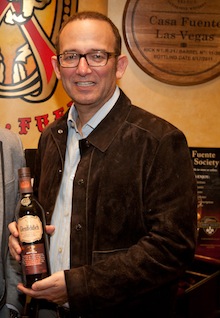 Stogie Guys: How have the past five years been?
Stogie Guys: How have the past five years been?
 Stogie Guys: We were fans of Dona Flor back in 2005 when the brand was first available the U.S. What were the legal issues that ended U.S. distribution?
Stogie Guys: We were fans of Dona Flor back in 2005 when the brand was first available the U.S. What were the legal issues that ended U.S. distribution?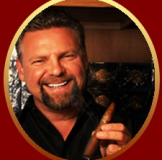 I tried the Sumatra right away and was pleased with its bold taste, smooth even burn, and quality construction. Matt was on his way to the Ybor City Cigar Heritage Festival where Urbano Cigars had a tent beside the Arturo Fuente family and across the street from Cigar Rights of America (CRA). We talked cigar blends and production.
I tried the Sumatra right away and was pleased with its bold taste, smooth even burn, and quality construction. Matt was on his way to the Ybor City Cigar Heritage Festival where Urbano Cigars had a tent beside the Arturo Fuente family and across the street from Cigar Rights of America (CRA). We talked cigar blends and production.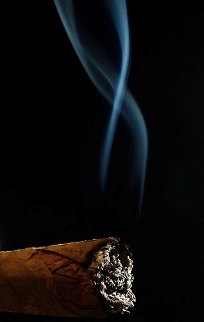 The club meets on the first Tuesday of every month at a shop called Little Havana Tobacco in Anoka, Minnesota. Started by a group of guys who wanted to get together with like-minded people and try new cigars, it also became a vehicle for a local cigar shop to bring more people through its doors—people who otherwise might have never stopped by.
The club meets on the first Tuesday of every month at a shop called Little Havana Tobacco in Anoka, Minnesota. Started by a group of guys who wanted to get together with like-minded people and try new cigars, it also became a vehicle for a local cigar shop to bring more people through its doors—people who otherwise might have never stopped by. Lisa Figueredo: I owed an ad agency and was up late one night working and was thinking of when my Abuelo Lee and Abuela Nena would have fresh hot Cuban bread and butter waiting for me when I woke up with some hot café con leche. Then my Abuela Nena and I would catch the bus and ride over to Ybor City for the day or sometimes my Abuelo Lee would take me to the local cigar factories to pick up the steams and waste from the tobacco leaves that he would use to spread on people’s lawns. I was thinking about how much I missed them and how I wished I could get those days back. That’s when I came up with the idea to write about my stories and the history of Tampa.
Lisa Figueredo: I owed an ad agency and was up late one night working and was thinking of when my Abuelo Lee and Abuela Nena would have fresh hot Cuban bread and butter waiting for me when I woke up with some hot café con leche. Then my Abuela Nena and I would catch the bus and ride over to Ybor City for the day or sometimes my Abuelo Lee would take me to the local cigar factories to pick up the steams and waste from the tobacco leaves that he would use to spread on people’s lawns. I was thinking about how much I missed them and how I wished I could get those days back. That’s when I came up with the idea to write about my stories and the history of Tampa.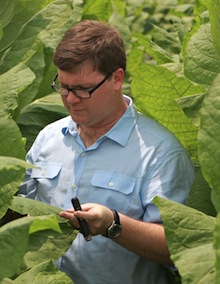 To get the scoop on what all this means for those who smoke and enjoy CAO Cigars, I talked to Ed McKenna, senior brand manager for CAO.
To get the scoop on what all this means for those who smoke and enjoy CAO Cigars, I talked to Ed McKenna, senior brand manager for CAO.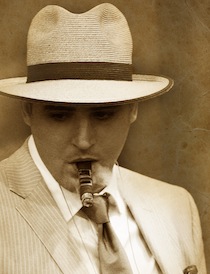 Born in Cuba where he worked with the legendary Alejandro Robaina, Fernandez has quickly gained fame making cigars for other cigar companies including Rocky Patel, Padilla, Graycliff, and Gurkha, as well as making exclusive cigars for catalog giant Cigars International (for whom he makes Diesel, Man O’ War, La Herencia, and other smokes.) At the 2010 industry trade show, Fernandez introduced his first solo national brand, San Lotano. (For more on San Lotano, read our reviews of the
Born in Cuba where he worked with the legendary Alejandro Robaina, Fernandez has quickly gained fame making cigars for other cigar companies including Rocky Patel, Padilla, Graycliff, and Gurkha, as well as making exclusive cigars for catalog giant Cigars International (for whom he makes Diesel, Man O’ War, La Herencia, and other smokes.) At the 2010 industry trade show, Fernandez introduced his first solo national brand, San Lotano. (For more on San Lotano, read our reviews of the  Patrick Ashby
Co-Founder & Editor in Chief
Patrick Ashby
Co-Founder & Editor in Chief Patrick Semmens
Co-Founder & Publisher
Patrick Semmens
Co-Founder & Publisher George Edmonson
Tampa Bureau Chief
George Edmonson
Tampa Bureau Chief